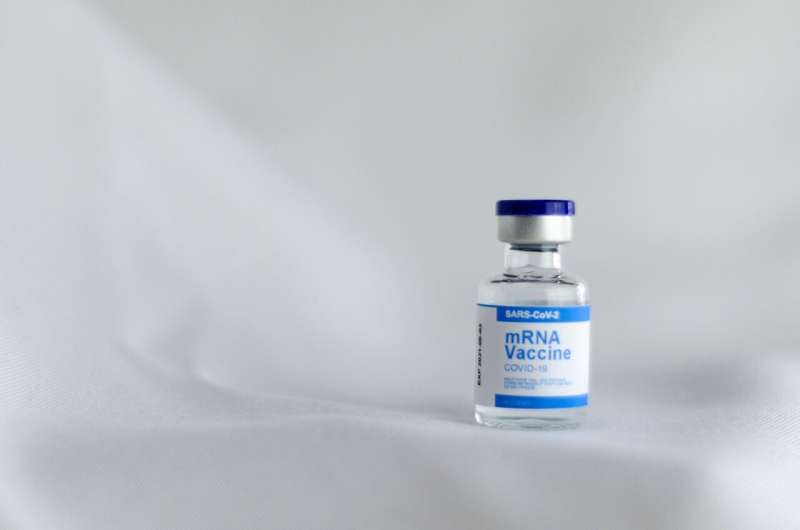'Stealthy' lipid nanoparticles give mRNA vaccines a makeover

Sadie Harley
scientific editor

Robert Egan
associate editor

A new material developed at Cornell University could significantly improve the delivery and effectiveness of mRNA vaccines by replacing a commonly used ingredient that may trigger unwanted immune responses in some people.
Thanks to their ability to train cells to produce virus-killing proteins, mRNA vaccines have gained popularity over the last five years for their success in reducing the severity of COVID-19 infection.
One method for delivering the mRNA to cells is by packaging it inside fatty spheres, called lipid nanoparticles, that protect it from being degraded. However, a common component of lipid nanoparticles called poly-ethylene glycol (PEG) can provoke immune responses in some individuals, leading researchers to search for more biocompatible materials.
Shaoyi Jioang, professor of biomedical engineering, is working to replace the PEG component of lipid nanoparticles with a more adaptable and stealthy option. The research is published in the journal Nature Materials.
The delivery vehicle for an mRNA vaccine needs to strike a Goldilocks balance—stable enough to protect the mRNA, yet labile enough to release it inside cells, and shielded enough to evade immune surveillance, but not so hidden that it hinders cellular uptake. PEG does the job but presents some unintended side effects in a small subset of individuals.
"The human body is mostly water, so if you insert something with exposed hydrophobic moieties, like PEG, into our bloodstream, our immune surveillance system says, 'Hey, that's a foreign material,' and will generate an antibody to destroy it," said Jiang. This environment makes adverse responses to a vaccine more likely and thus makes it harder for the vaccine to do its job.
Most people's immune systems are already primed to fight PEG. Prior research shows that a majority of people have anti-PEG antibodies "from people being exposed to PEG in so many commercial products like shampoo and toothpaste," said Jiang, adding that this widespread exposure may explain why the body is so quick to flag PEG as a threat.
To solve this, Jiang has developed lipid nanoparticles that use a zwitterionic polymer, a crucial alternative to PEG, enhancing the performance and biocompatibility of the system.
Due to the super-hydrophilic, or water-loving, nature of zwitterions, this material is able to blend into the body and deliver the mRNA more easily. This specific naturally derived material, called poly(carboxybetaine) (PCB), has a perfect balance of stealth and stability.
In his recent paper, Jiang found that replacing PEG with PCB in lipid nanoparticles results in highly effective mRNA vaccines that do not adversely trigger the body's immune system.
Jiang is working with Weill Cornell Medicine, Houston Methodist Cancer Center, the Hospital for Sick Children in Toronto, and the National Cancer Institute to move this discovery toward clinical applications, specifically in the development of mRNA-based cancer vaccines.
The zwitterionic nanoparticles help sneak the vaccines past the body's immune surveillance so that it induces antigen-specific immune responses while minimizing undesired immune activation.
"With a virus like COVID-19, you only need a tiny vaccine dose, and our immune system will respond. But for a cancer vaccine, the tumor environment suppresses the immune system, so you need a much higher dose to be effective," said Jiang. "If a patient has a minor problem because of the PEG, the issue will be amplified with a higher dose.
More information: Sijin Luozhong et al, Poly(carboxybetaine) lipids enhance mRNA therapeutics efficacy and reduce their immunogenicity, Nature Materials (2025). DOI: 10.1038/s41563-025-02240-8 ,
Journal information: Nature Materials
Provided by Cornell University



















